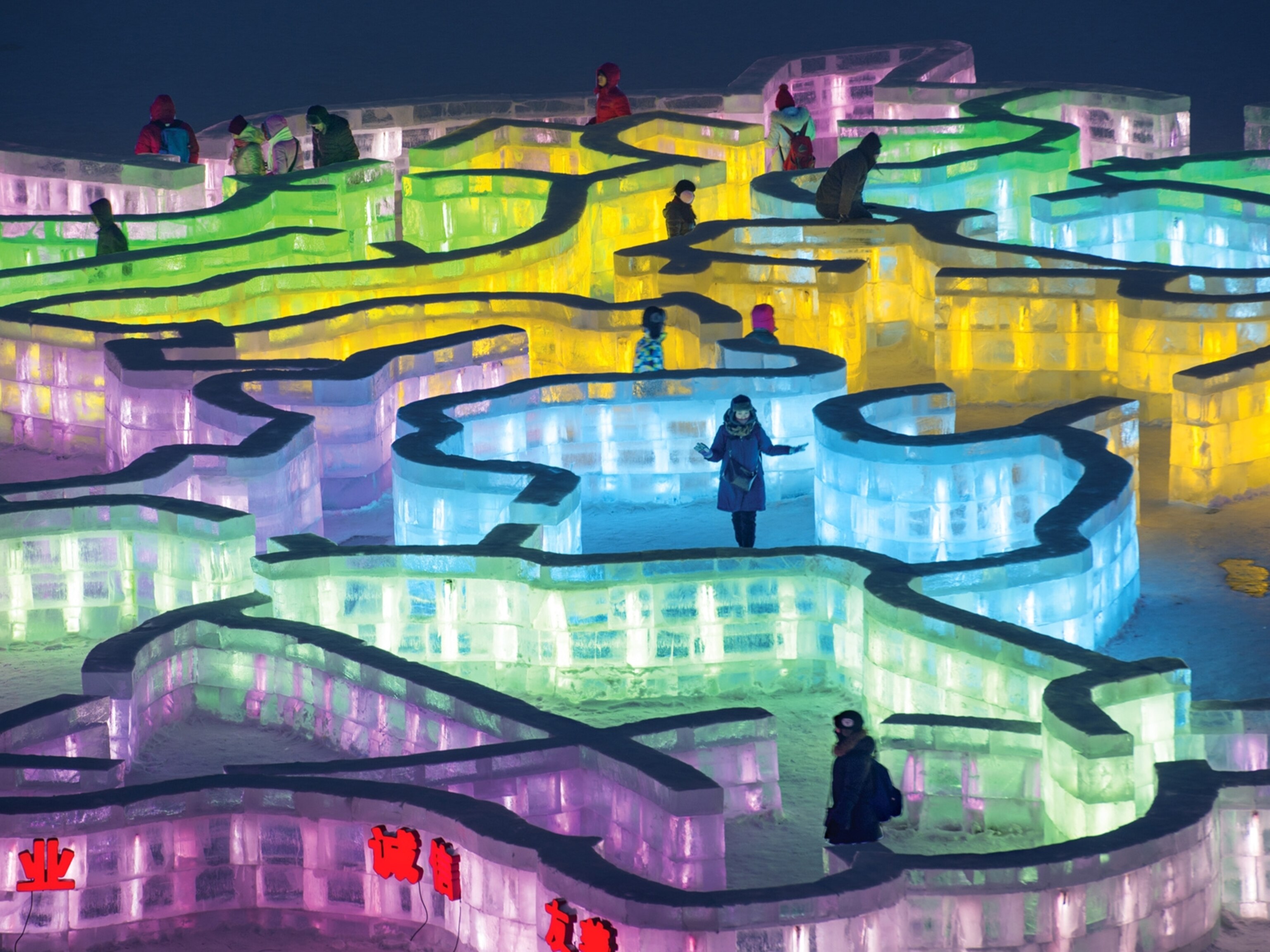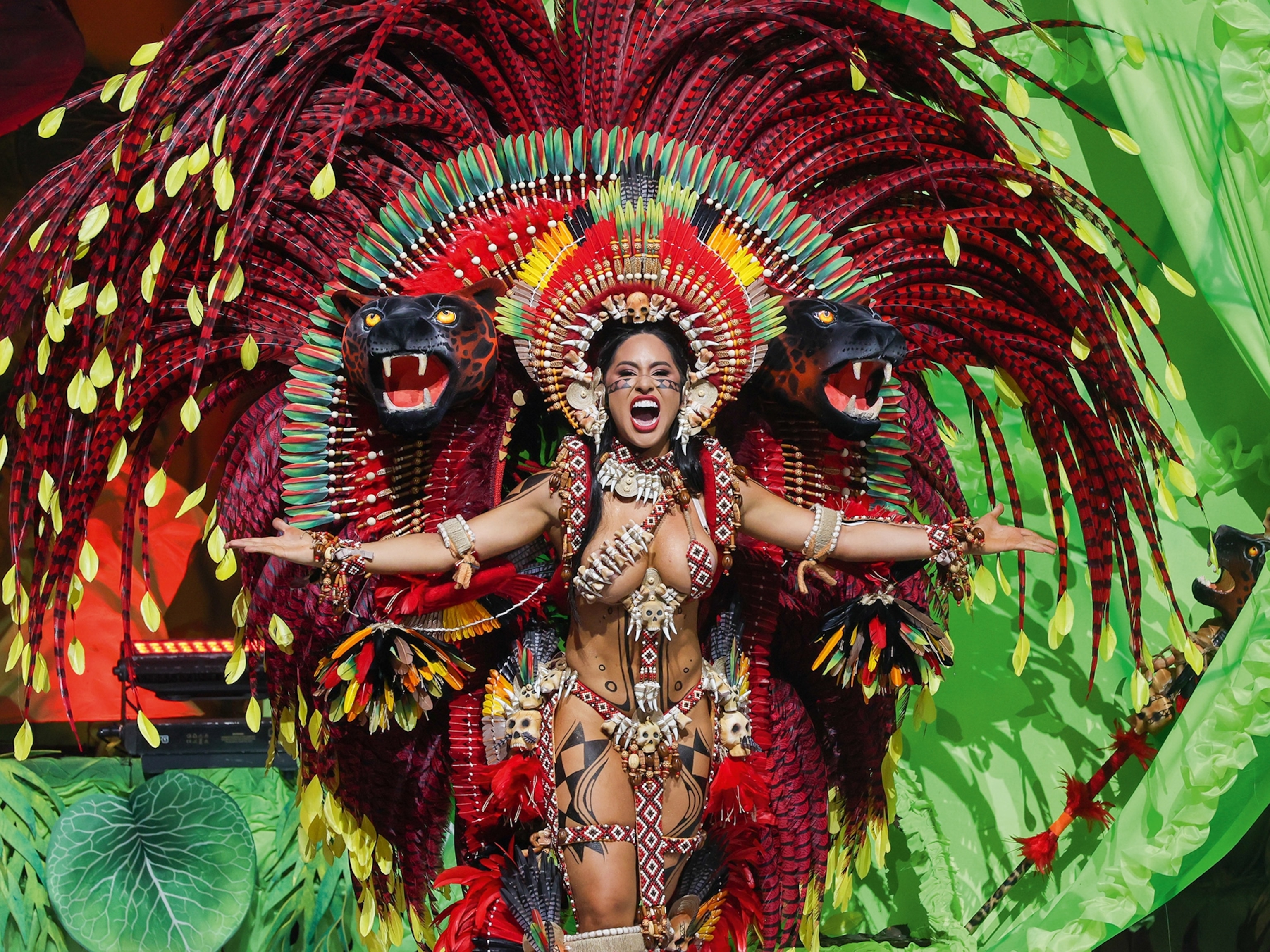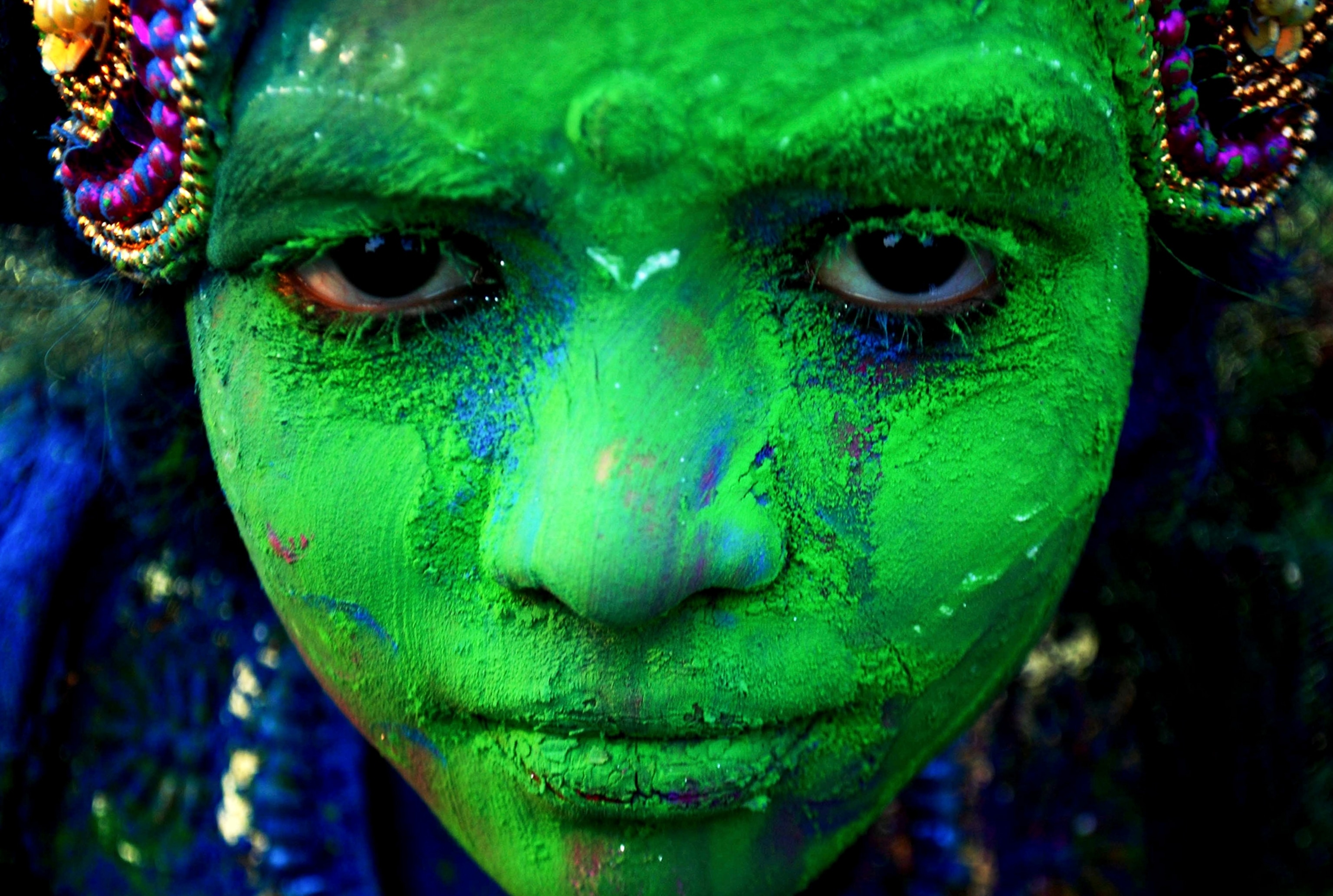
Our Favorite Pictures From India's Holi Celebrations
India celebrates the end of winter with dance and a dash of color.
Bright neon powder masks young and old in northern India during the annual Hindu celebration called Holi, held this year on March 17. Known as the festival of colors, Holi is celebrated on the last full moon in the lunar month of Phalguna.
An ancient tradition, Holi marks the end of winter and honors the triumph of good over evil. Celebrants light bonfires, throw colorful powder called gulal, eat sweets, and dance to traditional folk music.
"It's a time when people let go of their inhibitions," says Suhag Shukla, executive director at the Hindu American Foundation in Washington, D.C. "It's a playful celebration, and the colors remind us that beneath the surface we're all the same."

Red dye is thrown by the fistful into the Baldev Temple in Dauji, about 110 miles (177 kilometers) south of Delhi. Red is an auspicious color in India. "Red is traditionally a color that brides wear," said Shukla. "But typically during Holi, there is no preference for one color or another. It's the practice of coloring that we celebrate."

A widow dances in the streets of Vrindavan. In strict orthodox Hindu communities, some widows are forced to move to holy cities and are shunned by family members. During Holi, the caste system becomes less rigid and "everyone partakes in the festivals," Shakula said. In the city of Vrindavan in the state of Uttar Pradesh, more than a thousand widows living in the city turned out this year to celebrate the festival of color.

A widow covered in gulal dances to traditional folk music. Many songs have been written for the festival of colors, from lighthearted tunes to ballads about the romance between the prominent Hindu gods Lord Krishna and Radha.
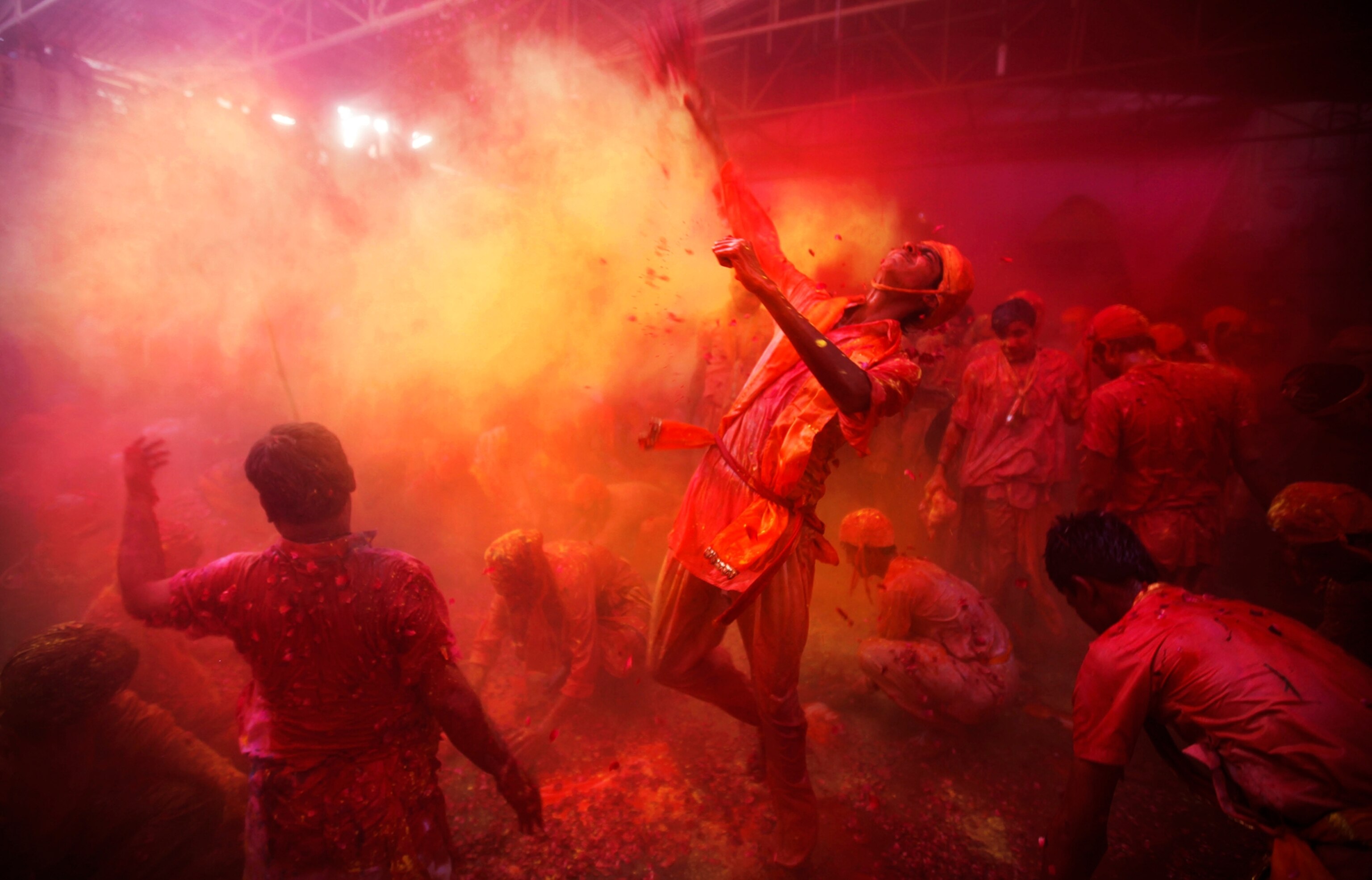
Villagers in Nandgaon throw red gulal at each other in the Radha temple. Nandgaon is the hometown of Radha, a close friend of Lord Krishna in Hindu mythology. According to the Holi tradition, the throwing of gulal originates with Radha and Lord Krishna. Young Lord Krishna, who was dark-skinned, asked his mother why Radha was so fair. Krishna's mother told him to throw color on Radha's face to make her the same color as him.

A young man raises his hands in celebration at the Nandagram temple. In Krishna's traditional hometown of Nandgaon, men from nearby Barsana village are soaked in colored water by men and beaten with sticks by women from Nandgaon.

A woman shakes yellow gulal from her hair during celebrations in Mumbai. Traditionally, Holi was more popular in northern India than in the south, but today it is widely celebrated throughout the country. It has also recently spread to parts of Europe and North America.
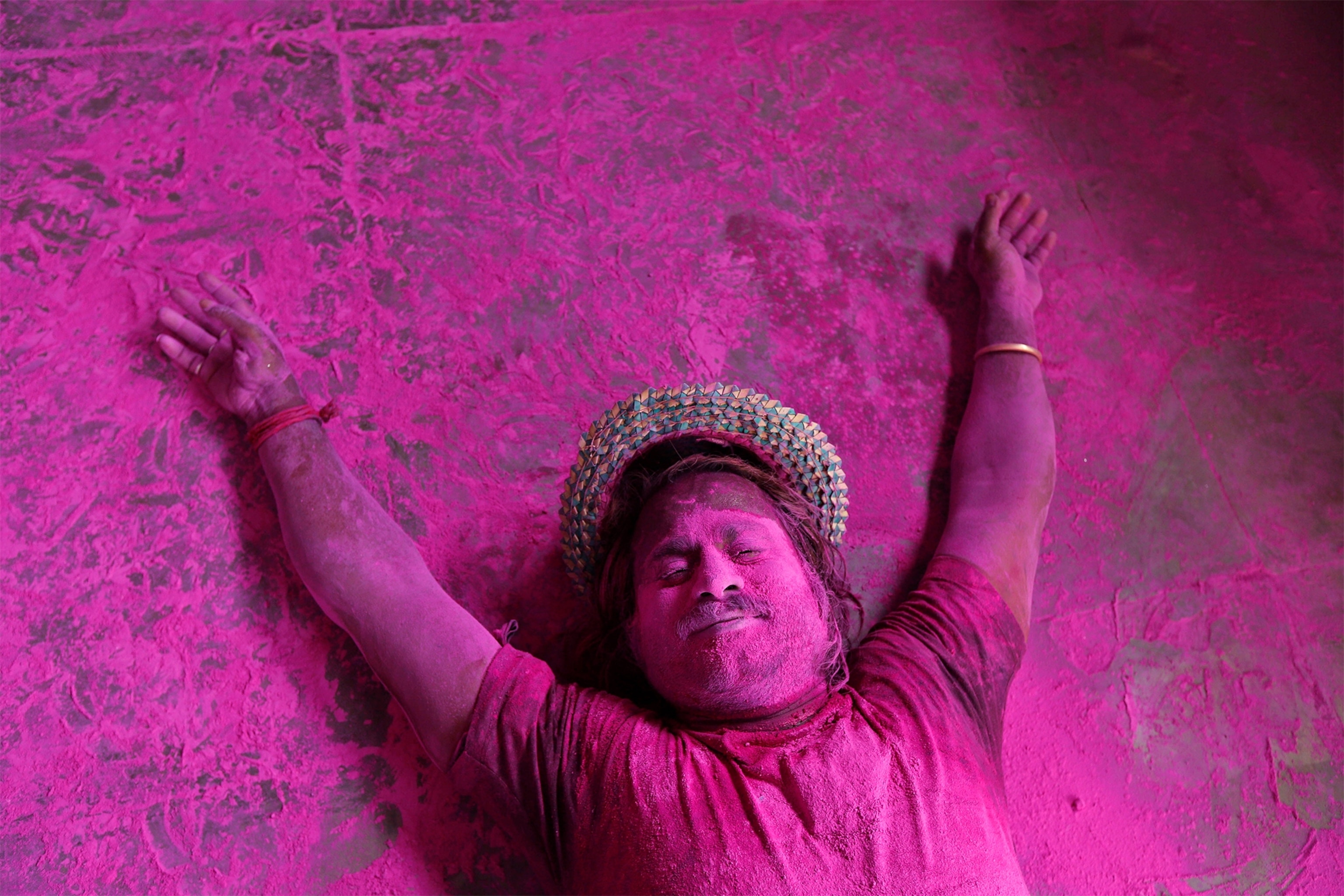
A man in Allahabad lies on the ground smeared in pink gulal. The color represents springtime and flowers in bloom.


